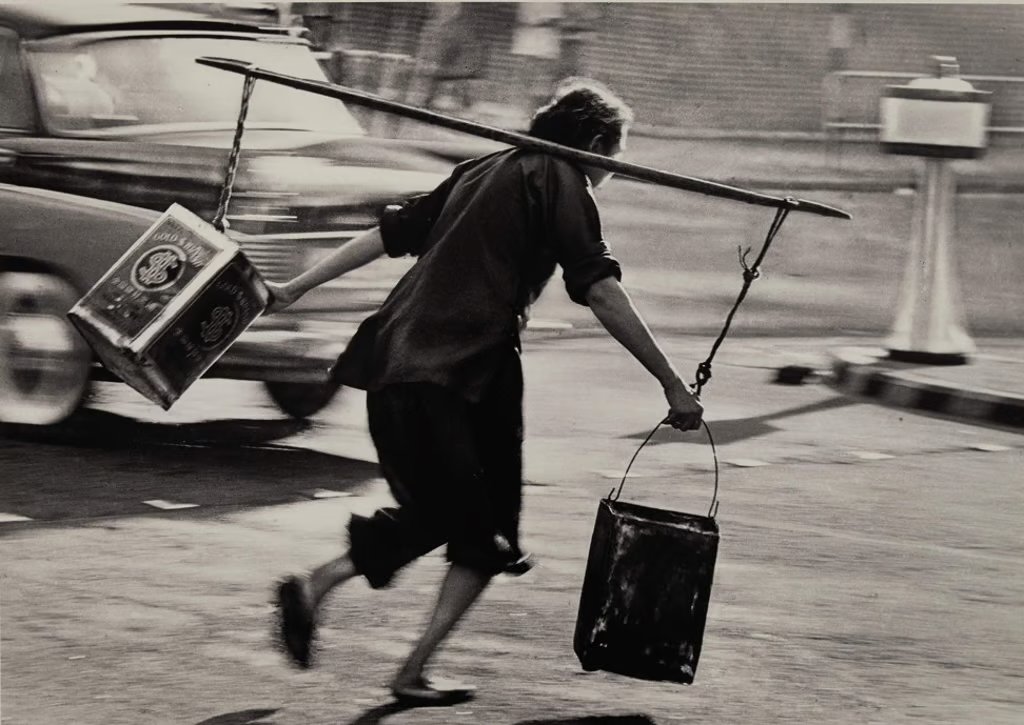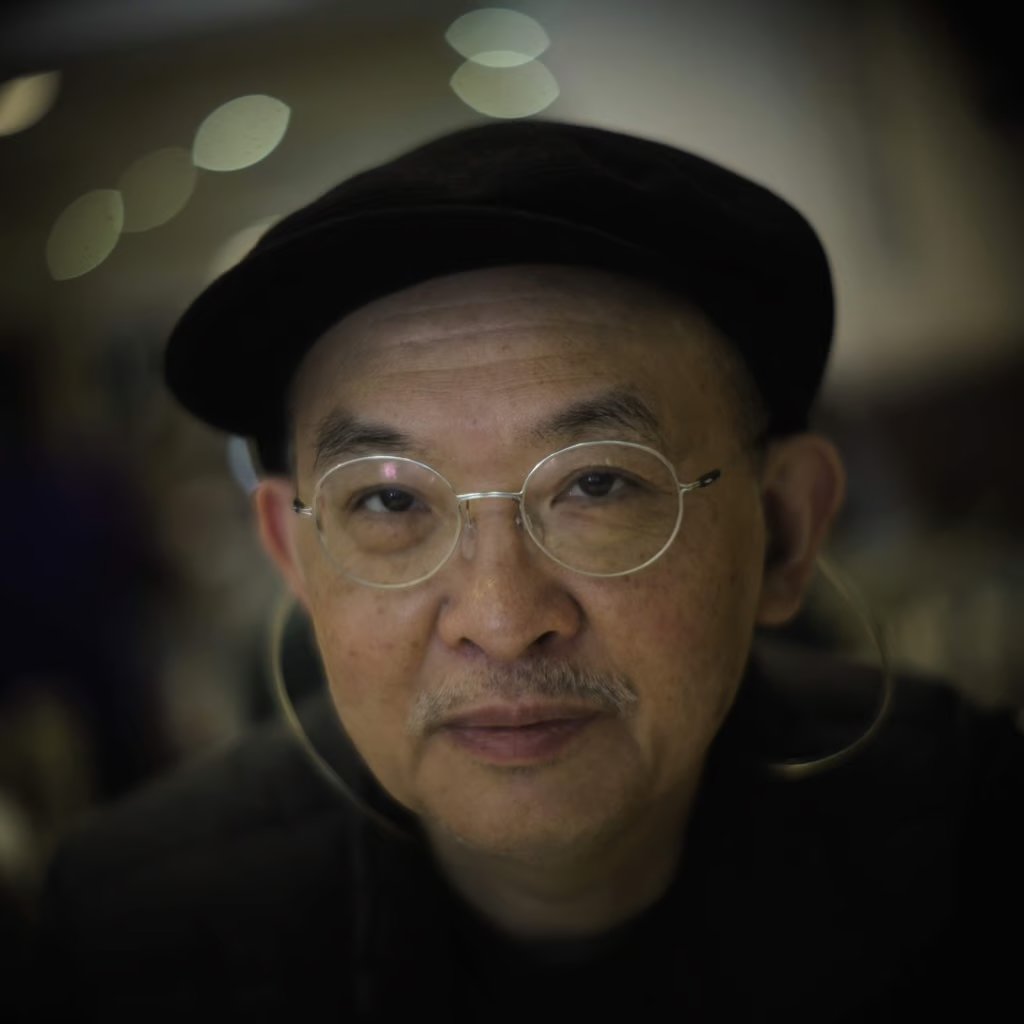Who are Yau Leung and Lee Ka-sing? 60s iconic photographers’ series of ‘old’ and ‘new’ Hong Kong now at Sotheby’s
Renowned 1960s photographer and contemporary artist offer contrasting photographic views of Hong Kong
Yau is also fondly known as the “Bresson of Hong Kong” because of his style, which was a lot like that of French photographer Henry Cartier-Bresson, who pioneered the genre of street photography in the 20th century.
Yau started his career in the 1960s during Hong Kong’s colonial era and his photos documented a rapidly changing city.
His black and white photos conjure a nostalgia about the days when the special administrative region was less crowded and colonial elements pervaded the city.
There were very few Hong Kong photographers from the 1960s and Yau Leung and Fan Ho are the most represented and celebrated. Sotheby’s Hong Kong held a solo exhibition of Ho’s work in 2017.
“There wasn’t really a market for photographs in Hong Kong back in the 1970s and ’80s, if the artists themselves did not properly preserve their works, these precious photographs were basically and regrettably lost in the mists of time,” says Sotheby’s gallery director, Jonathan Wong. It makes these “vintage” photos even more precious. The photography market didn’t really develop until the 1990s when the concept of processing images in limited editions emerged, and that photographers were aware of the need to organise their works.
“This explains why there were very little traceable work left from the photographers of the 1960s and ’70s, and to hold an exhibition of [this] scale becomes a challenging task,” Wong adds. It isn’t surprising then that the works by Yau are in very high demand, especially for those in the field of photography collecting. However, Wong notes that he has seen significant interest from young collectors – who perhaps are less familiar to the landscape of the old colonised Hong Kong – drawn to these nostalgic photos and are curiously reviewing their own city from a different historical point of view.
Wong therefore curated the exhibition, “Vision of Hong Kong from Two Generations: Yau Leung | Lee Ka Sing”, which is now open to the public until June 25. This is the first time that prized processed and signed photographs by the late artist Yau is on offer.
Wong says, “There are also people who have previously learned Yau’s name but are unaware of where to get hold of his works – this current exhibition not only showcases a significant number of his works, but they are also processed and signed by Yau. This is hence an extremely rare opportunity for photography collectors to review the history of the city they are deeply attached to.”
For three decades, the late artist passionately captured the everyday lives of Hongkongers, focusing on the natural interactions among children and the working class. The artist is best known for his “simple yet profound compositions” and exposed people’s life and living with authenticity.
Juxtaposing Yau’s photos are those from Lee Ka-sing (born in 1954), who is 13 years Yau’s junior. Lee is a contemporary photographer. He was a writer before he turned to photography and says that his “background of using ‘words’ influenced his way of doing photography”.
“That’s the reason I work with multi-layer images. Normally, an image has only one focal point; my photo is like a Chinese painting, it has different focal points in one work,” Lee adds. “I consider the large format book ‘Hong Kong, Two Visits’ [one] piece of work, even though it has over a hundred images.”
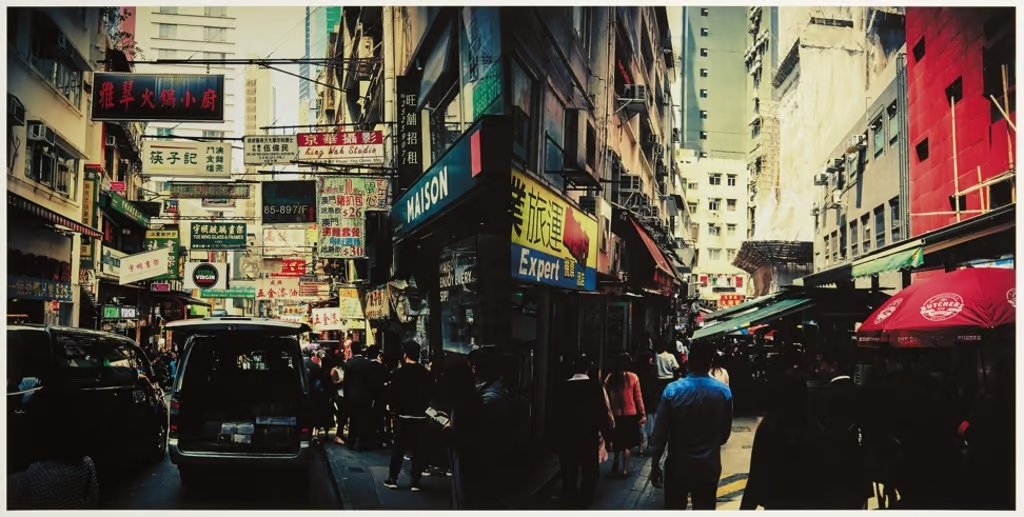
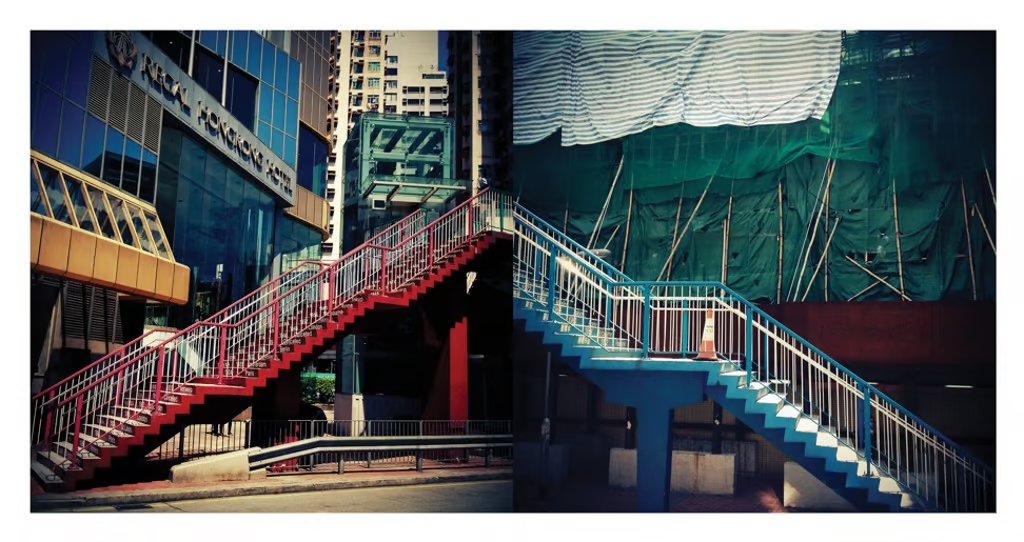
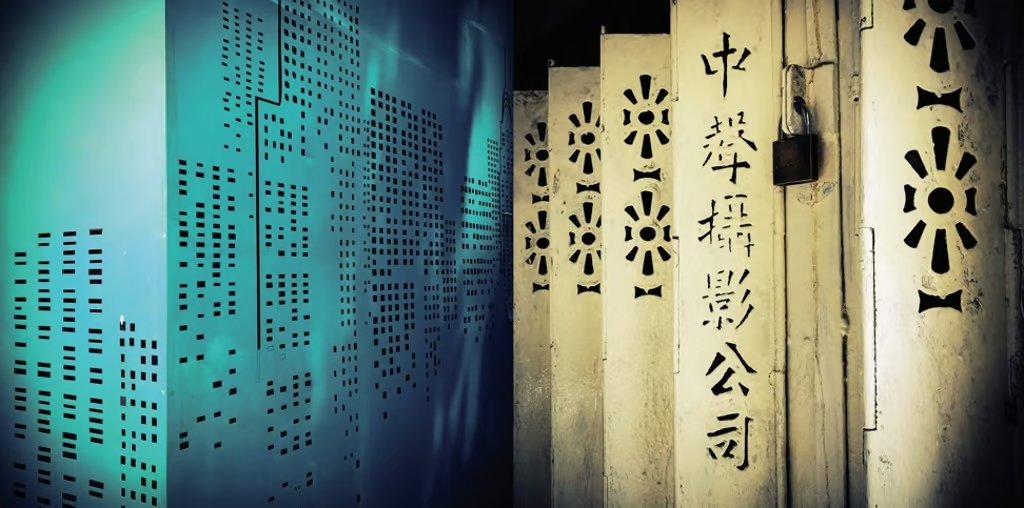
Lee’s own style is collage-like and contemporary. In his artistry, the photographer shows his prowess in combining photographs. Lee is drawn to dynamic perspectives and meanings generated through juxtaposition, uniting and superimposing images in geometric patterns. The exhibition has put both his monochrome and colour photograph series on sale.
His personal favourite of Yau’s is ‘Cheongsams’. “It is very natural that people are drawn to nostalgia. We cherish good old memories of the past. Today people chase after classical images of the sixties or seventies; in the same way, 20 years later they will go after what people have been doing today,” Lee explains. “The fact is, very few people have the vision of knowing what’s important now. To most of us, we are just unaware of what we have now – until it’s gone.”
One piece of advice from Lee, “I will suggest people value their own path of life. If you have unique ideas, distinctive observation and life experience, cameras and techniques are tools to realise your goals.”
The exhibition is showcasing works ranging from US$3,600 to US$40,000, all available for immediate purchase. The exhibition starts today until June 25 at Sotheby’s 2 Gallery in One Pacific Place.
Original article published on South China Morning Post (Jun 6, 2019)


